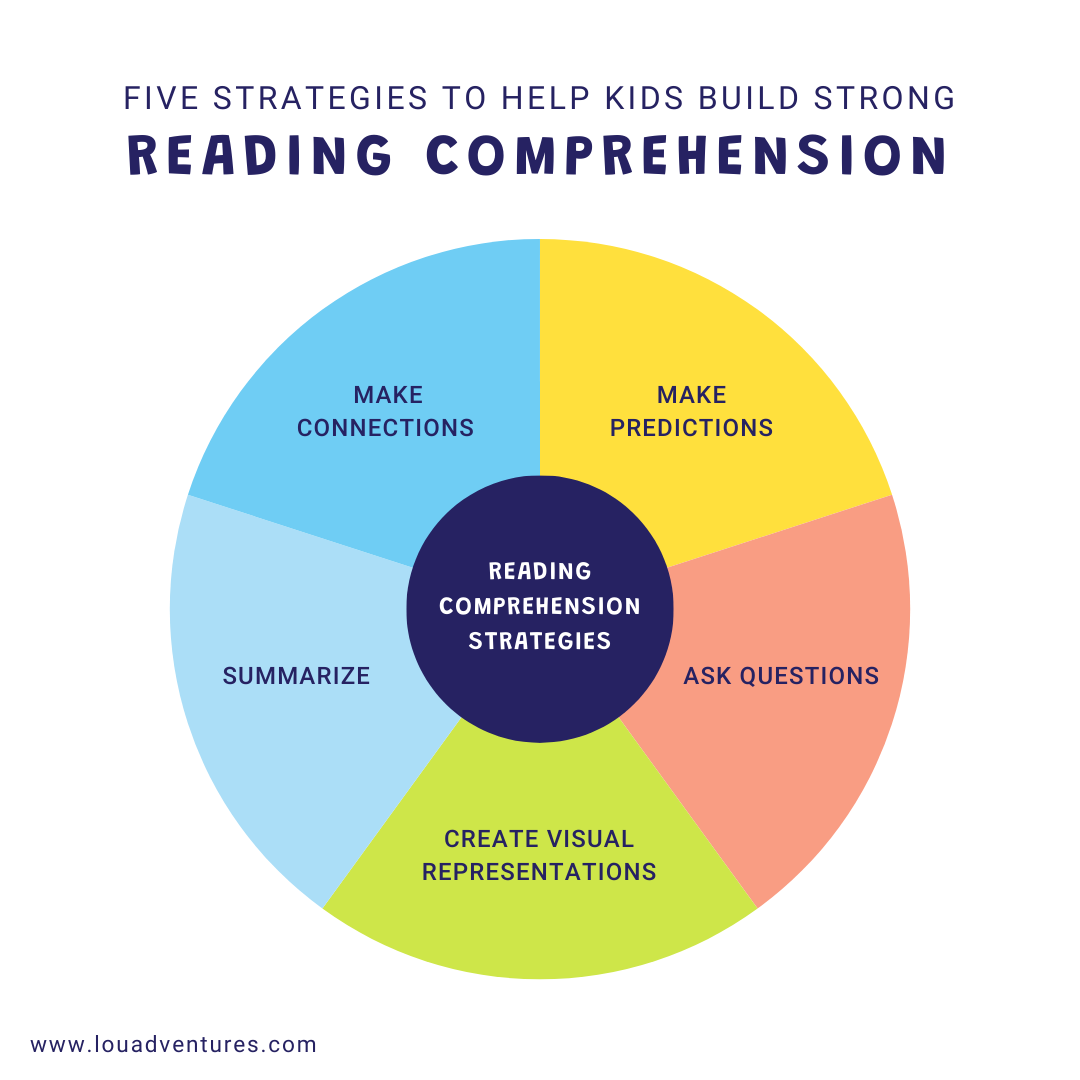Five Strategies to Help Kids Build Strong Reading Comprehension
Part 1 of Our Series: Reading Roots — The 5-Step Journey for Kids
Reading Time: 2 mins, 36 secs
Understanding what we read is more than just reading and restating words. It’s a fundamental ability that impacts nearly every aspect of education, requiring readers to actively engage with stories, make connections, and derive meaning from what they read.
Strong reading comprehension is crucial from a young age for several reasons:
It is the basis for success in all subjects, including math, history, and science.
It promotes critical thinking and problem-solving abilities by teaching young minds to analyze and understand written material.
It is vital to help you make sense of and reply to written messages in different ways.
Overall, comprehending what we read is essential for academic achievement and navigating the complexities of the modern world.
The 5 Critical Strategies for Strong Reading Comprehension
Well-rounded readers use several specific strategies to comprehend what they read. While all are helpful to readers, some come easier than others, depending on the person.
Let’s better understand the five critical strategies to help your child build strong reading comprehension ability and how you can help them practice at home.
1. Making Connections
Readers naturally consider everything they know about a topic while reading. This helps them connect what they already know and what they are reading about.
Tip: Help your child make connections by encouraging them to brainstorm the similarities between a passage of text and their lived experiences.
2. Summarizing
Using simple language helps readers distill essential information and identify the most important points in a story. This allows the reader to parse out only the key details in their own words and can aid in comprehension — especially in challenging texts with many secondary details.
Tip: When reading with your child, summarize the story for them and explain why you chose to call out specific details.
3. Creating Visual Representations
By using graphics, readers can organize information and identify key concepts. This helps your child visualize a story’s content, enhancing comprehension and retention.
Tip: Work with your child to create a story map or Venn diagram that identifies the important details of a story.
4. Asking Questions
When readers can ask questions and note confusing topics as they read, it helps to clarify details and make inferences. After reading, these questions can facilitate discussions and prompt deeper, analytical questions for further understanding.
Tip: Encourage your child to write down all questions they think of while reading.
5. Making Predictions
Readers can predict the story before and during reading based on context clues, illustrations, or prior knowledge. This engages critical thinking skills and encourages them to anticipate what can happen.
Tip: Help your child plot out what they think might happen in the story and have them explain how they got to these conclusions.
Just like with anything, getting better at reading comprehension takes practice. For kids, it’s important to keep working on these strategies so they can understand things well as they grow up and go through school. Understanding what they read is monumental to childhood development and strengthens critical thinking, communication, and problem-solving skills. Most importantly, it helps readers of all ages develop their perspectives and sharpen their worldviews.
Read the Entire Series
Share this article







